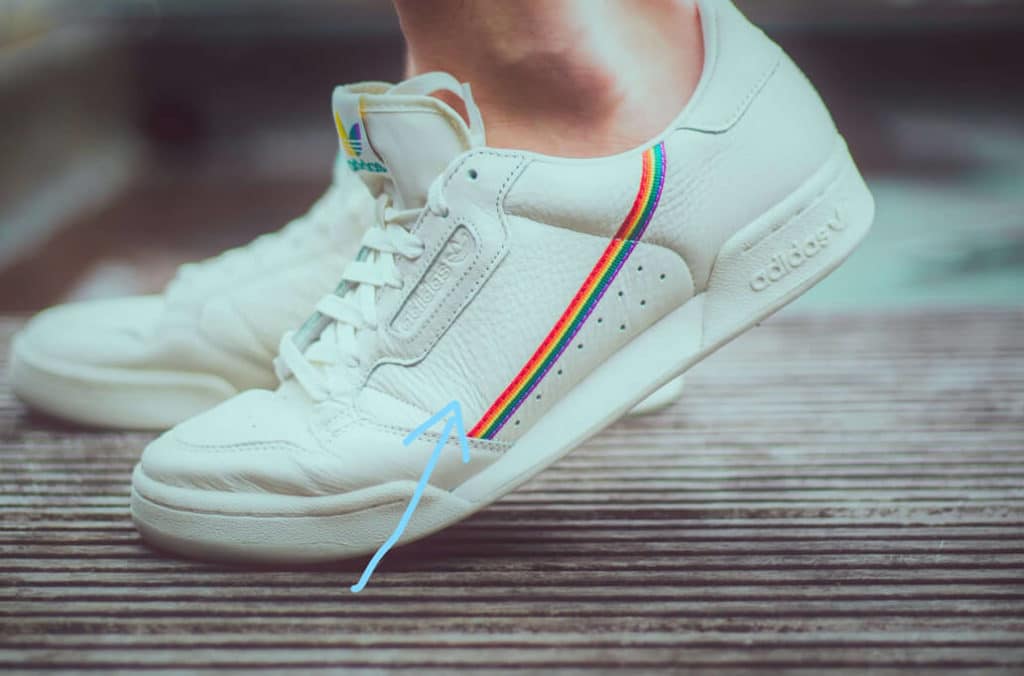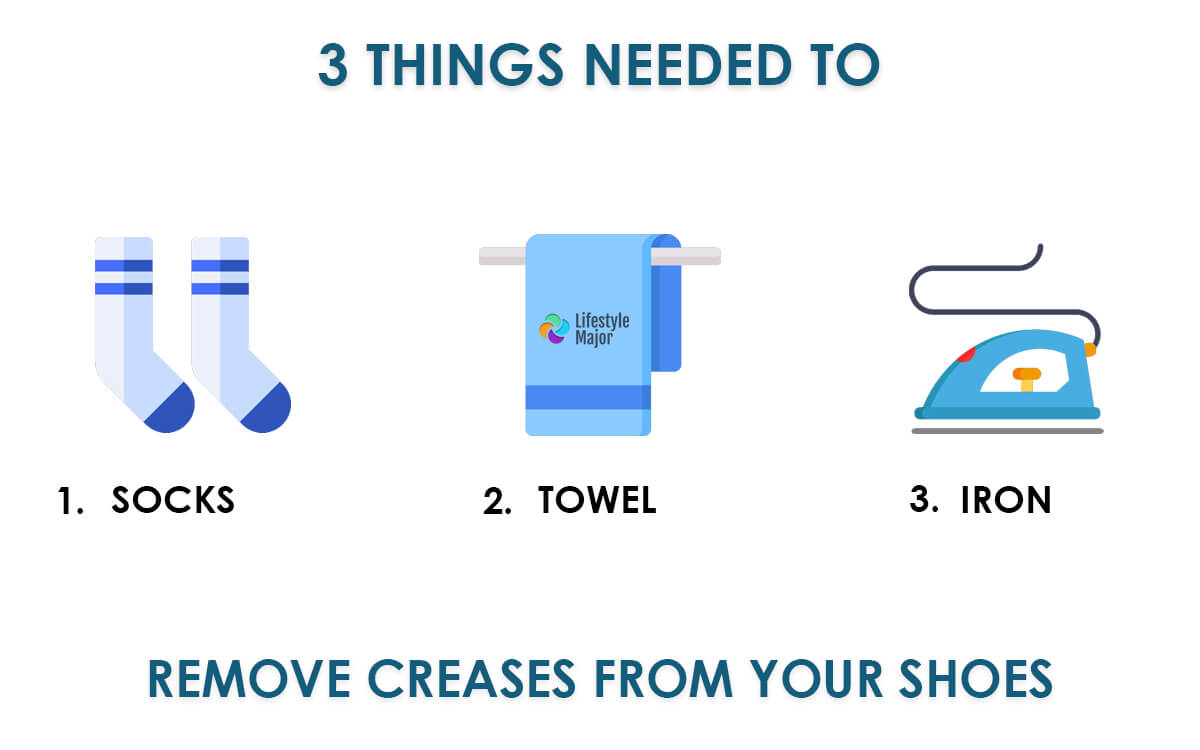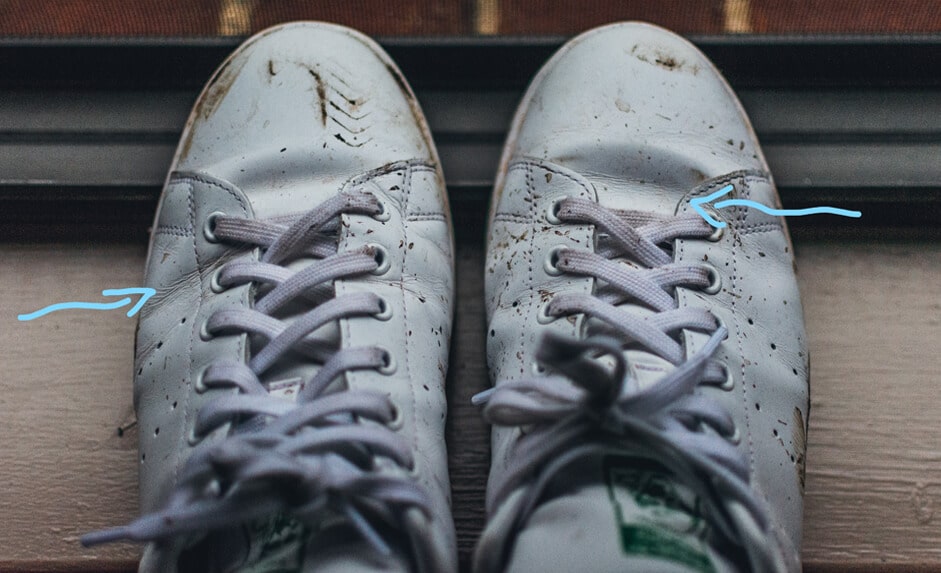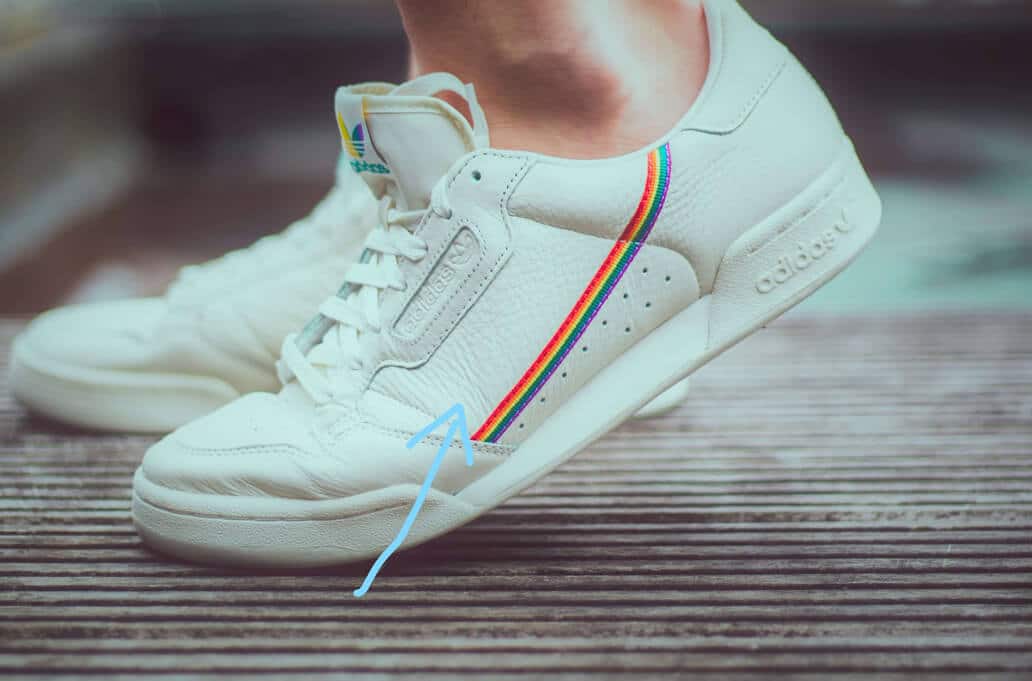Creases and wrinkles on your shoes may truly ruin your look.
Fortunately, getting rid of those annoying creases is a breeze. You can return your shoes to their visually pleasing state with a little heat, effort, and the appropriate materials.
How do creases appear in fabric shoes?

First of all, shoes are intended to bend when walking, allowing your feet to stretch. Creasing happens when the shoe is straightened because the top materials are flexible enough to recover their original shape. Keep in mind that the upper material of the shoe must contract to allow for this bending.
Fabric shoes are significantly more flexible than leather and synthetic materials, although creasing is unavoidable no matter what the material is.
Second, creasing happens as the material used to make the shoe upper bends to meet the various stresses on your shoe as you move.
Walking causes your feet to create a constantly shifting angle at the balls of your feet, where your toes connect the main foot, which is called the metatarsal joints.
Walking shoes are designed to bend in the same region to allow your foot to fulfil its job, but the top material gets pressed together and folds up throughout the stretching process.
Explanation with an EXAMPLE
So if you look at the crease of a carton with the lid closed, you will see that the carton is smooth and compact on the outside and creased inside.
If you lift the lid after it has been closed and examine the carton at the lid joint, you will notice it is still wrinkled.
To return to science for a moment, the material on the outer edge of the box at the junction had to extend from its flat condition to create the joint, and the inner edge had to compress up to let the fold occur.
Since this material is not elastic, the crease stays when you open the lid. In fact, if you bend an extremely elastic band, you will not find a crease when you restore it to its original shape.
As a result, the material’s elasticity significantly impacts the look after the pressures that caused the creasing has been removed.
The same procedure applies to shoes. The leather or top material folds up to enable your foot to bend, and the majority of those wrinkles remain when the shoe is unflexed.
Since we know fabrics are far more elastic than leather or reasonably similar synthetic materials, creases are a lot less visible.
How to remove creases from fabric shoes easily?

Essentials:
- Socks
- A towel
- Iron
Steps:
- To begin, remove the laces from your shoes and fill the toes with socks to help them retain their form.
- Put your towel on top of your shoes after soaking it in hot water and drying it out until it’s barely moist.
- Set your iron to medium heat and iron over the towel where the creases on your shoes are, pulling the iron up after a few minutes so that the shoes do not burn.
- Let your shoes cool for a few minutes after this, and the wrinkles should be vanished.
How to remove creases from fabric shoes DIY?
Your gut may use an iron to remove wrinkles from your shoes, but you may not always have access to an iron, which is okay.
There are DIY methods for removing creases from shoes that do not require the use of an iron, and as long as you act promptly, you will be able to remove the creases without difficulty.
Steam
Using steam on wrinkled sneakers is the simplest approach since it may remove creases from leather shoes and not require purchasing any other goods.
To use this approach, moisten a towel and microwave it until it is steaming. Rub the towel over the wrinkled parts of the sneaker. The steam can assist in eliminating the wrinkles, but it may be necessary to do it more than once.
Heat Gun
When utilizing a heat gun, you should first fill the toe of your shoe with something like socks.
Protect the shoe with a damp towel and begin applying heat, keeping the heat gun about 6 inches away from the shoe.
Keep applying steam and massage the shoe with the towel, and your shoe will appear brand new in a matter of minutes.
Foam Inserts
Foam inserts not only eliminate creases from shoes but also help protect footwear from creasing.
These inserts are fashioned like the front of your shoe and are placed inside it.
This keeps the shoe in form while also slightly extending the material, which helps to stretch out existing wrinkles and prevent new ones from developing.
Also Read: How to get stain out of your shoes?
Where Do Shoes Crease?
Shoe wrinkle where the upper materials are weakest. The design of the shoe, as well as the small flaws of all materials, make it hard to tell exactly where a crease will appear, but you can be certain that the general region should be where the shoe must bend to let your foot relax.

Why Do They Crease In Certain Places?
Shoes wrinkle where the shoe bends when you walk, yet even two pairs of identical shoes may crease in slightly different locations.
This is significant because a tiny change in placement might imply the difference between a shoe that uncomfortably pushes on a hot area where your toes are near the upper at that specific position and a crease that misses that precise spot and causes no pain.
A few variables are at work in this case:
Weakest Point
Shoes will wrinkle where the top material is best to crease. This weakest point is determined in part by the physical characteristics of the material and in part by the amount of support used to prevent creasing.
Hardly any material is completely similar over its whole surface. Leather is a natural material that varies in thickness and elasticity based on the hide section it originates from.
Since synthetic materials are not entirely uniform, there will be regions that are slightly more robust to bending and others that are more vulnerable to bending.
Shoes are often manufactured from many pieces of material. Therefore, there will be joints stitched or glued together, which will significantly impact how the stresses from bending are spread throughout the shoe surface.
Reinforcement
The other element is reinforcement, which refers to your foot supporting the upper material when wearing the shoe, which fluctuates as your foot form changes as you move.
Creasing occurs if the force distribution is heavily influenced by design, support from your foot under the top, and natural deficiencies in the upper materials combine to produce the weakest place to bend.
In summary, you may expect the shoe to crease in the broad area where bending happens naturally when walking, but the specific location is hard to predict.
You must also know that shoes might wrinkle on the sides of the top at times. This occurs when the shoe sides, known as the quarter and vamp, which differ by style, are weak and, in most cases, poorly fitting and loose.
Once you wear your shoes, the heel region will also crease, specifically if you are lazy, and compress the heel as you put your foot into the shoe.
Usually, shoes include heel counters that strengthen the shoe’s heel to offer greater stability. Still, based on the materials used, these will not stop the heel from folding if you continuously step down when putting your shoes on.
How Can You Reduce Creasing In Your Shoes?
There are multiple techniques for reducing creasing. Keep reading if you’re interested.
Using a Shoe Horn to Reduce Heel Creasing
Choose a shoe with a high-quality heel counter to minimize creases in the heel.
Nevertheless, using a shoehorn when putting on your shoes is the ideal way.
If you constantly use a shoehorn, you will avoid crushing the shoe heel and create a really excellent habit that will help you increase the lifespan of your shoes in general.
These cheap accessories can save you money by requiring you to buy fewer pairs of shoes in the long run.
Reduce Creasing by Wearing the Correct Shoe Size
Selecting the correct shoe size is also critical because it reduces the space between the shoe upper material. This enables your foot to give strength to the shoe top material while also reducing creases.
There is no pressure applied to the upper creasing if there is a big space between your foot and the upper, and it will crease at the weakest points.
Insert your foot into the front of the shoe and measure the gap at the heel to ensure it is the correct size. If the shoe is the correct length, your index finger should match up in the space without being forced in or having quite so much space around it.
A properly fitted shoe should softly press in on the largest portion of your foot without feeling too tight or too loose.
Space
Finally, there should be no more than a half-inch gap between your foot and the front of the shoe where you put your foot in.
Every manufacturer employs various last forms across models, and the lasts vary by brand. Asian-made shoes are typically narrow in width and length. However, this varies by brand and model, as well as across shoes in a model series.
Excessively tight shoes can create ingrown toenails due to the strain on the nail and the skin junction in your toe when the nail develops when you are wearing your shoes throughout the day.
Shoes that are too big may flop about and brush against your skin, producing painful patches or blisters.
Focusing on how you lace your shoes will also help you, as threading your laces may make a big difference in how well your shoes fit your feet.
This is due to the laces tensioning the uppers and pulling them tighter onto your foot without being too snug, affecting the force distribution throughout the shoe.
Do Shoe Crease Protectors Actually Work?
Shoe crease guards are another effective method of reducing creasing.
These inserts are worn in the shoe and provide a moderately rigid surface to the top materials, helping the shoe upper stay flat and in form.
Even the finest crease guards will not keep shoes completely crease-free, but they will significantly minimize creasing.
Using Shoe Trees to Stay Fit
Shoe trees, particularly the wooden variety, considerably aid in the preservation of the shape of your shoe while it is not being used.
These accessories conform to the contour of the shoe and extend into the toe box region by pushing against the shoe heel.
They function on the premise that when you wear shoes, your feet expel moisture, and part of this moisture is retained in the shoe, making it more flexible.
The shoe’s uppers tend to shrink somewhat as they dry, and the shoe trees help the uppers contract back into form, pulling the creases flatter.
How Can You Prevent Shoes From Creasing?
The basic answer is that you cannot eliminate creasing, but you can decrease the degree of creasing by careful design selection, having the appropriate fit for your foot, adding shoe-toe box strengthening inserts, and good maintenance while not wearing them.
General Shoe Care
General shoe maintenance may go a long way toward keeping your shoes looking fantastic for a longer period of time.
When your shoes are brand new, don’t let them get wet.
When you first put on a pair of shoes, they will expand and adjust to your foot shape slightly due to the heating effect of your feet and moisture produced in the form of perspiration, making the shoe top materials more flexible.
Once your shoes dry, they will take on the shape of your foot’s permanent impression. Your shoes will break in over the course of a few weeks, especially if they are leather.
It is best to avoid getting your shoes wet during the wear-in phase because they will lose their form very readily as they dry.
Spray Water Repellent on New Shoes
It is good to spritz new shoes with a water repellent shoe spray for the same reasons.
The goal is not to make your shoes waterproof so that you can ignore getting them wet, but instead to keep off any splashes and make it simpler to kill germs and cleanse.
Spraying your shoes every 3-6 months is ideal for providing this special care barrier and keeping shoes looking fresher.
Switch between different shoes on a daily basis
It is a good idea to change shoes daily, allowing you a little additional time for your shoes to dry completely.
Applying Moisturizer.
Mink oil is a fantastic product.
Take note that leather is animal skin and, like your skin, benefits from moisture.
By moisturizing and washing regularly, you can eliminate dirt built in the creases and keep the leather more flexible, which helps it retain its form, specifically when used in combination with shoe trees.
Avoid getting your shoes wet and stay away from the heat
Getting your shoes wet and then placing them in a heated location to dry is among the terrible things you can do to shoes.
You’ve undoubtedly seen people lay damp shoes on top of radiators after soaking them thoroughly or even use a hot air hairdryer to achieve the same goal.
Drying shoes in this manner may keep them dry, but it will also cause the shoes to lose any elasticity they may have had. It’s similar to how sunbathing all day dries out and burns your own skin.
Final Words
Creasing is unavoidable, but the best part is that you now know how to remove creases out of shoes, and it’s a lot easier than you would have believed.
Even without iron, you will be able to keep your shoes, which will allow you to get the maximum usage out of them.
If you liked this content and want to read more, look at what else we have on our website.

